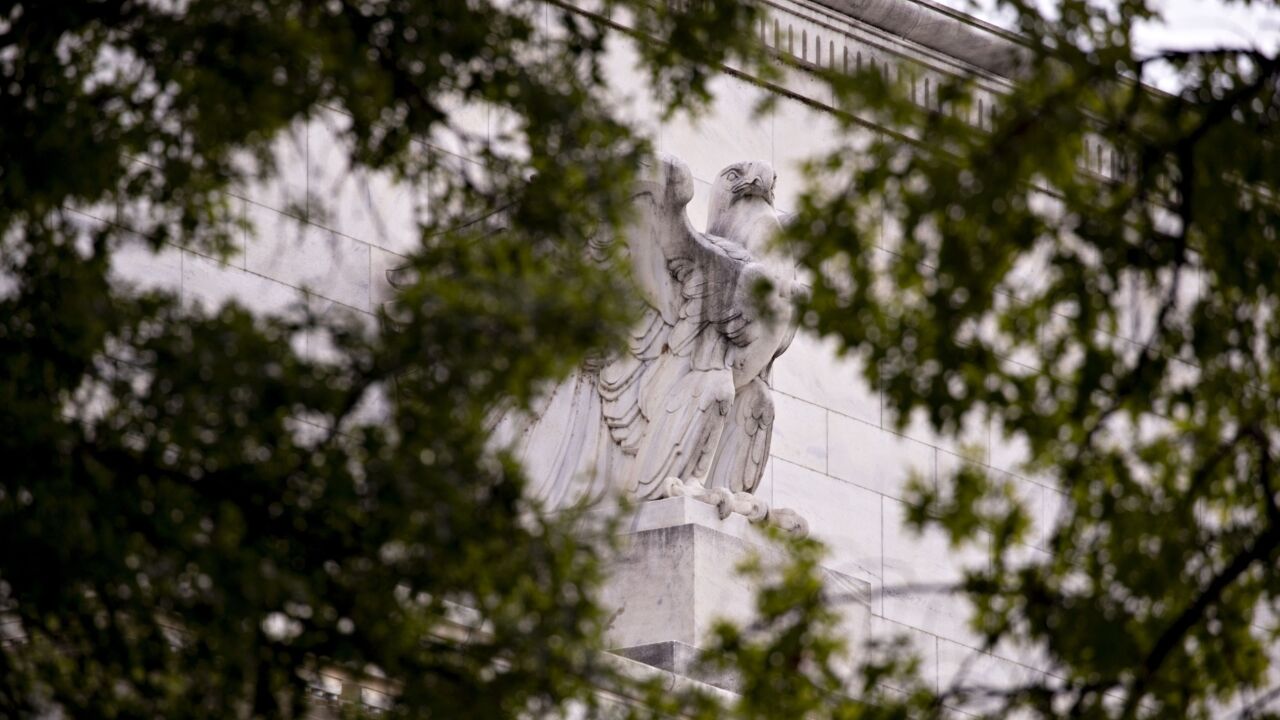Federal Reserve
Federal Reserve
-
The Federal Reserve received a bipartisan critique Wednesday from members of a congressional oversight panel who said the central bank has been slow to launch a key emergency lending program for midsize companies.
May 21 -
The central bank's Financial Stability Report said companies may face difficulties repaying debt given lower earnings, “which could trigger a sizable increase in firm defaults."
May 15 -
But market observers remain unsure whether changes to the $100 billion Term Asset-Backed Securities Loan Facility program will boost CLO investor demand or new-deal issuance, given key restrictions that remain in place.
May 13 -
The head of the U.S. central bank said its emergency credit programs were not designed to prop businesses up over the long term.
May 13 -
The central bank will disclose information on a monthly basis about its Term Asset-Backed Securities Loan Facility and its Paycheck Protection Program Liquidity Facility.
May 12 -
The agency is being methodical in its rollout of the Main Street Lending Program in hopes of avoiding missteps that followed the launch of other coronavirus relief efforts. But observers say delaying aid brings its own risks.
May 11 -
The Federal Reserve also said in a supervisory report released Friday that it would conduct stress tests this quarter as planned, taking into account sudden deterioration in the economy brought on by the coronavirus pandemic.
May 8 -
The agencies issued a rule to better enable banks to participate in two of the Federal Reserve’s lending facilities and “support the flow of credit to households and businesses.”
May 5 -
The Fed has tweaked its Main Street Lending Program to stir more enthusiasm, including the creation of a third financing option for larger companies. Will it make a difference?
May 4 -
They and other firms are seeking to replicate the windfalls many enjoyed in the aftermath of the financial crisis when, by taking advantage of low-cost loans via the Term Asset-Backed Securities Loan Facility, they were able to notch double-digit returns purchasing top-rated ABS as the economy recovered
April 30 -
The Federal Reserve chairman pledged to use every tool at the central bank's disposal to limit the economic fallout from the coronavirus and urged lawmakers to take further action.
April 29 -
The central bank and other agencies have come under pressure to be transparent about their use of funds authorized by the recent pandemic rescue law.
April 23 -
The head of the Senate panel overseeing Federal Reserve and Treasury Department efforts to boost the U.S. economy urged the agencies to remember their disclosure requirements.
April 17 -
Bank research reports note the loans will only apply to purchases of CLO notes backed by newly issued leveraged loans. Most recently launched deals involve warehoused or distressed secondary-market loans ineligible for TALF.
April 13 -
The Federal Reserve's $2.3 trillion loan stimulus includes plans for outstanding commercial mortgage-backed securities and newly issued collateralized loan obligations.
April 9 -
The Fed's actions are designed to ensure the flow of credit to midsize businesses and state and local governments hit hard by the economic impact of the coronavirus pandemic.
April 9 -
The OCC and FDIC are holding off on easing debt limits in response to the coronavirus pandemic, leaving billions of dollars locked up at banking subsidiaries that could be used for lending amid the deepening economic crisis.
April 7 -
The central bank is creating a facility to provide financing to banks participating in the Small Business Administration’s Paycheck Protection Program.
April 6 -
Ginnie Mae and the FHA provided temporary liquidity relief for mortgage servicers bracing for higher delinquencies, but the industry continues to pressure Treasury and the Fed to provide more comprehensive support.
April 6 -
The agencies will give the industry another month to submit feedback on the so-called covered fund portion of the rule "in light of potential disruptions resulting from the coronavirus.”
April 2



















